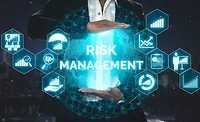Malware-as-a-service is the growing threat every security team must confront today

Hackers are entrepreneurs. After legitimate developers built software-as-a-service (SaaS) businesses by renting access to productivity software, cybercriminals seeking new revenue streams created malware-as-a-service (MaaS) as a dangerous alternative. Consequently, amateurs with limited computing expertise and hardware can rent out malware attack servers through the dark web, extorting enterprises with multi-million-dollar ransoms.
Today, ransomware constitutes an estimated $1 billion annual threat, as hackers increasingly target enterprises, large-scale organizations, and government entities. There’s every indication that the MaaS model will continue to grow in popularity since it has drastically lowered the skill level required to carry out attacks: Malware arrives instantly ready for use, offering users hacks and servers that eliminate the need for technical skills.
IT teams must evolve their cybersecurity protocols to proactively address both the proliferation of MaaS and increased ransomware attacks. In order to prevent breaches, organizations need complete visibility and understanding of their expanding attack surfaces to identify their highest exposure risks.
Vulnerability blind spots are treasure troves for hackers
Enterprises might believe that they can prevent attacks by addressing critically severe threats, but that’s no longer a viable strategy: Hackers are now targeting low- to medium-severity vulnerabilities and gaining access to under-protected corporate environments. According to recent research, medium-severity vulnerabilities account for 41% of total vulnerabilities globally, and attackers armed with this knowledge exploit deprioritized threats as unguarded backdoors.
In 2020, new ransomware samples nearly doubled over the prior year, while all trojan types grew by 128% - volumes that indicate how much the pandemic energized criminals. Multiple incidents of large-scale ransoming, including hospitals and critical infrastructure, provide clear evidence that nation-states and international crime syndicates have turned to MaaS as a cash cow. So although MaaS is often associated with novice attackers, it has broader appeal; North Korea’s infamous Lazarus Group reportedly leveraged Trickbot’s MaaS for successful attacks.
Zero in on what matters
Overburdened security teams have relied too heavily upon traditional vulnerability scanning and patching, which regrettably leave networks underprotected. Scanning does not provide a complete picture of the attack surface, as some devices cannot be reached by traditional scanners. Similarly, patching is an incomplete remediation practice and doesn’t always work across complex corporate networks’ most vulnerable assets. Since business risk increases when enterprises lack viable alternative remediation capabilities, more advanced security posture management programs enable teams to consider alternatives such as applying IPS signatures, changing firewall rules or cloud security tags, or applying configuration changes to their networks or security devices.
Organizations must instead refocus their security efforts for the modern era, mapping their entire attack surfaces to comprehensively identify exposed vulnerabilities, then applying prescriptive remediation options to reduce the most business risk. Three relatively simple steps can make a huge difference:
1. Visualize the entire attack surface: Security teams only protect what they see, so creating a comprehensive, enterprise-scale network model is key to any successful security program. The network model needs to go beyond traditional networks, covering corporate networks and hybrid and cloud environments hosting large numbers of physical, virtual and multi-cloud assets.
2. Determine exposure levels for each vulnerability: Good tools can simulate attacks before they happen, using a contextually aware model of the network and its security controls. Without subjecting the existing network to interruptions, a security team can use this detailed visualization of the entire attack surface to seek out weaknesses in a highly complex environment, zeroing in on exposed and exploitable vulnerabilities.
3. Access accurate, current intelligence: Organizations seeking to secure modern networks need a cybersecurity solution capable of aggregating all types of security data, wherever it’s being produced. Continually analyzing configuration and security control data from disparate infrastructures can help security teams identify and block the paths of potential breaches.
MaaS exists because it’s profitable: threat actors always chase the money, and cybercriminals generate substantial cash flows by selling MaaS software. This is a testament to the sophistication of both the malware itself and the tactics threat actors are using.
Practically, MaaS makes it easier than ever for malicious actors to carry out attacks, which means we’re likely to see further increases in threats against businesses of all sizes. For security teams, the mandate now is to counteract this unfortunate trend – a task that is best accomplished by connecting the dots on disparate data sources and leveraging exposure analysis to greatly reduce business risk.
Looking for a reprint of this article?
From high-res PDFs to custom plaques, order your copy today!





